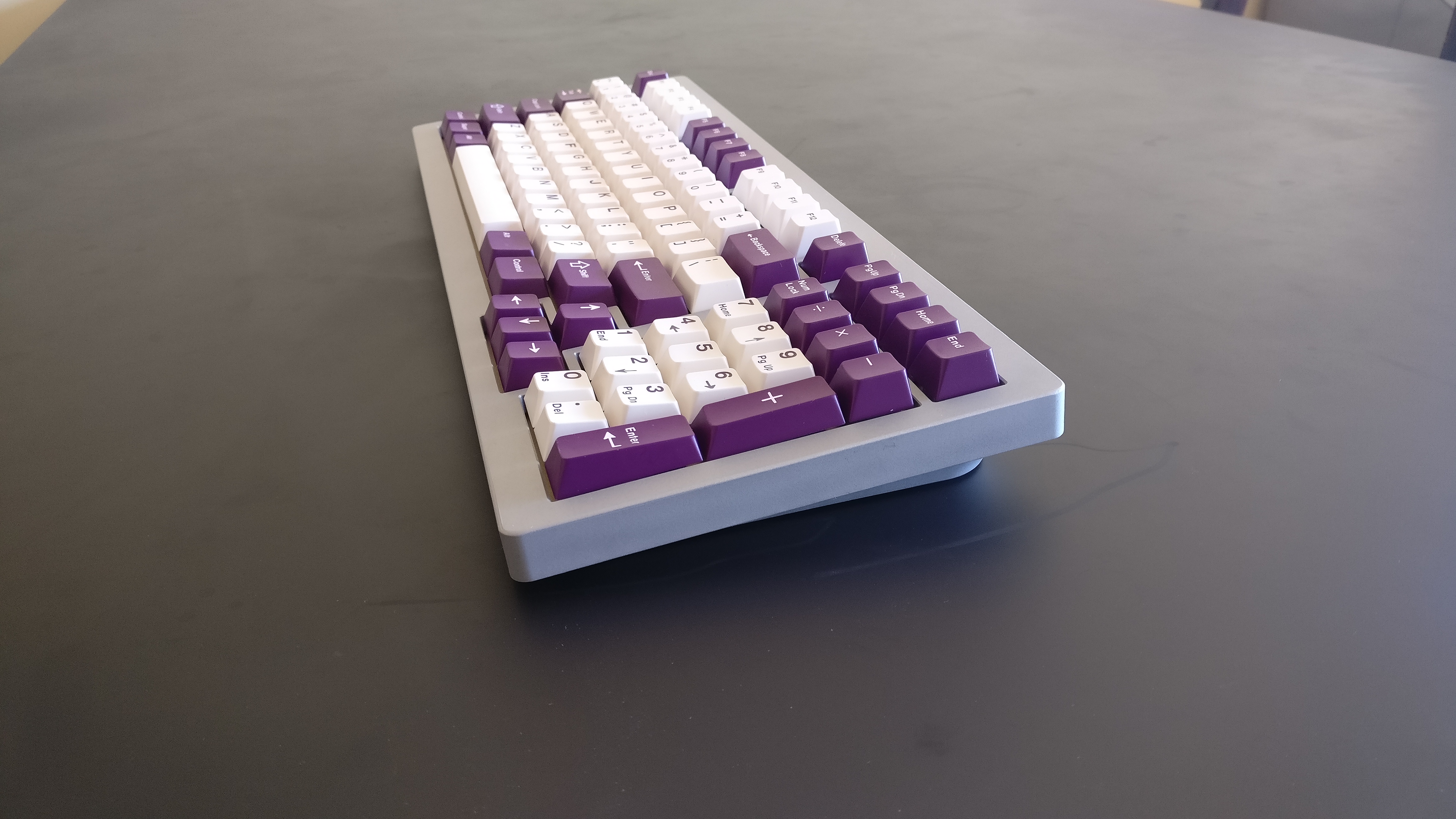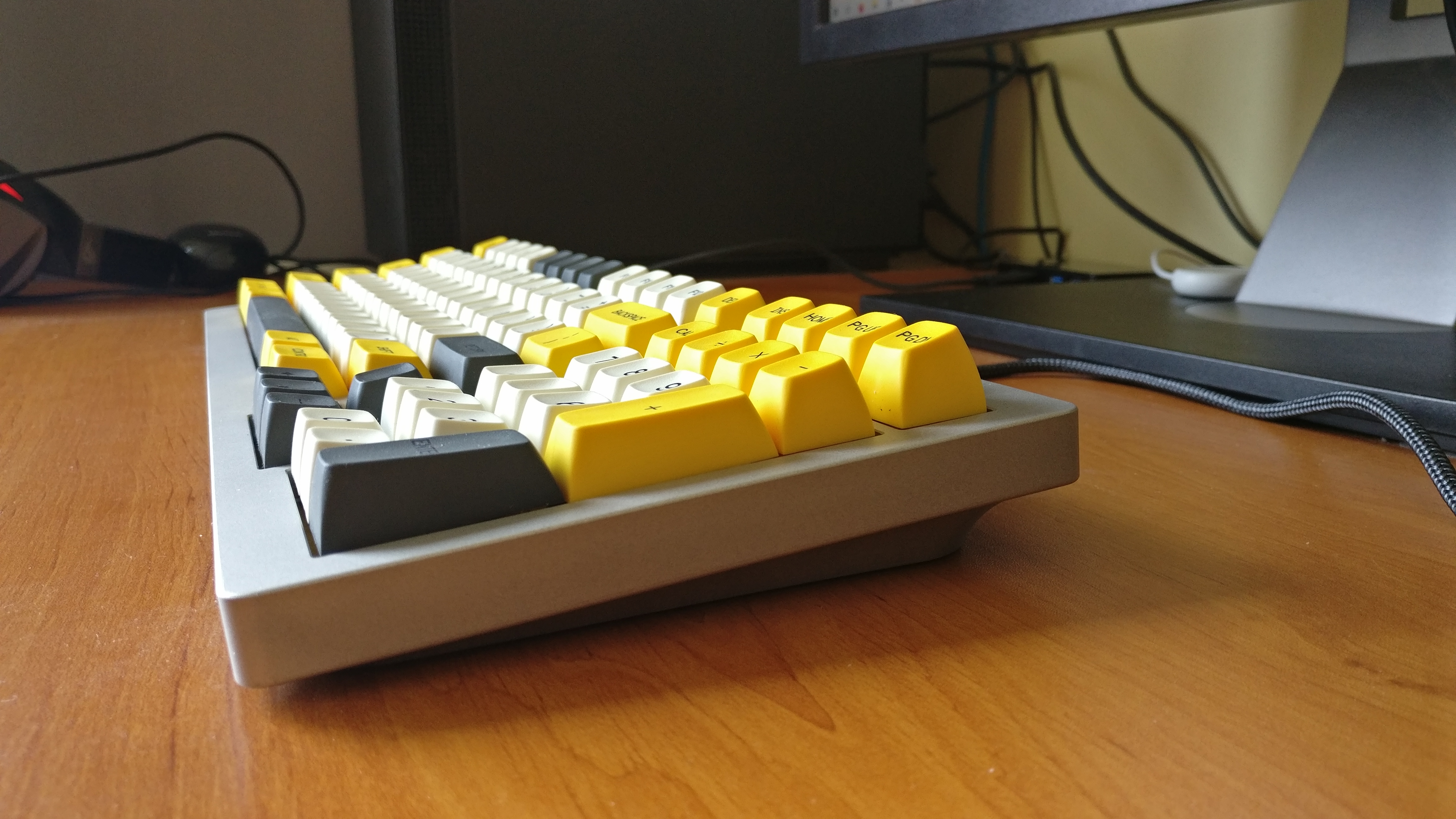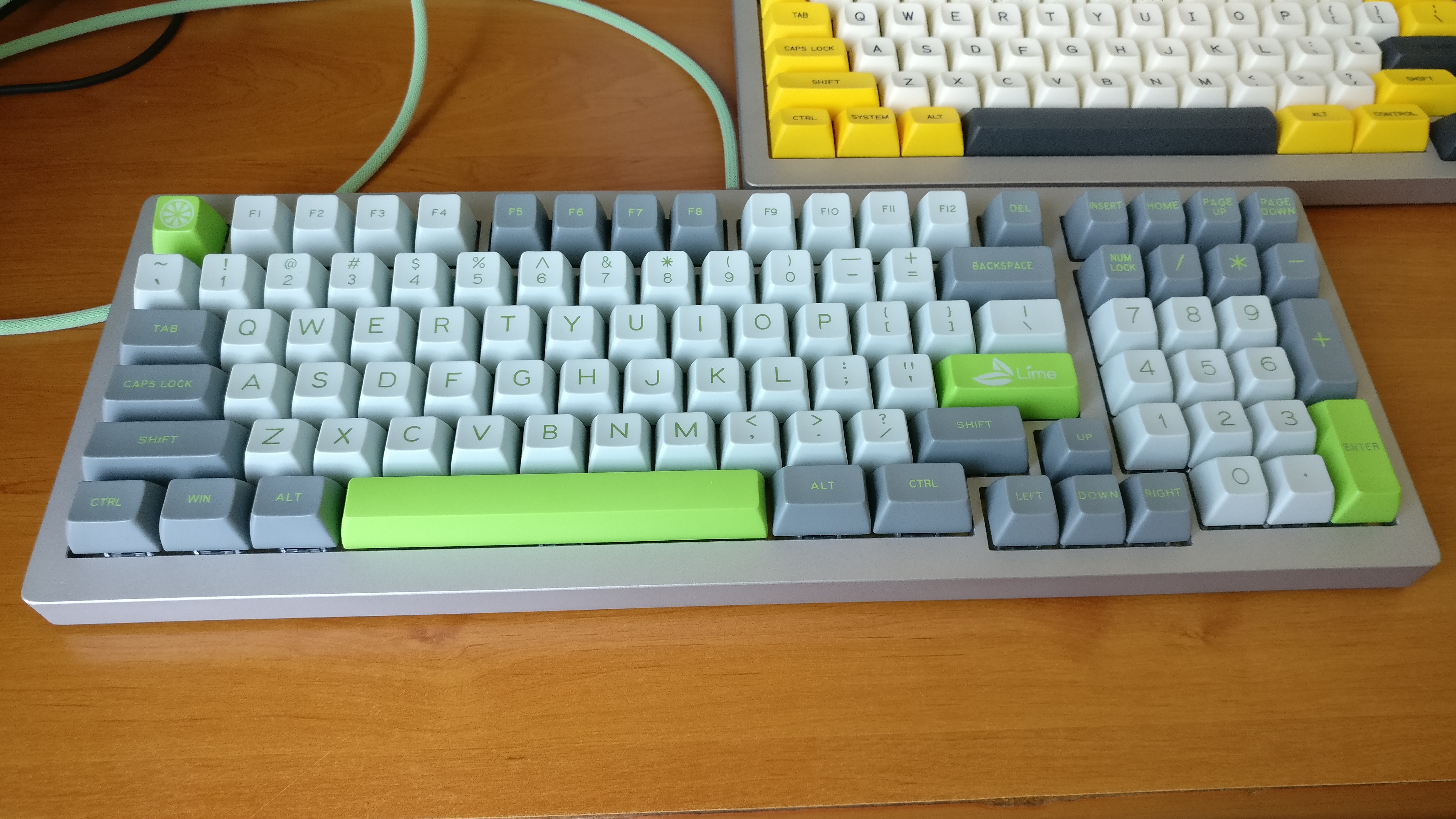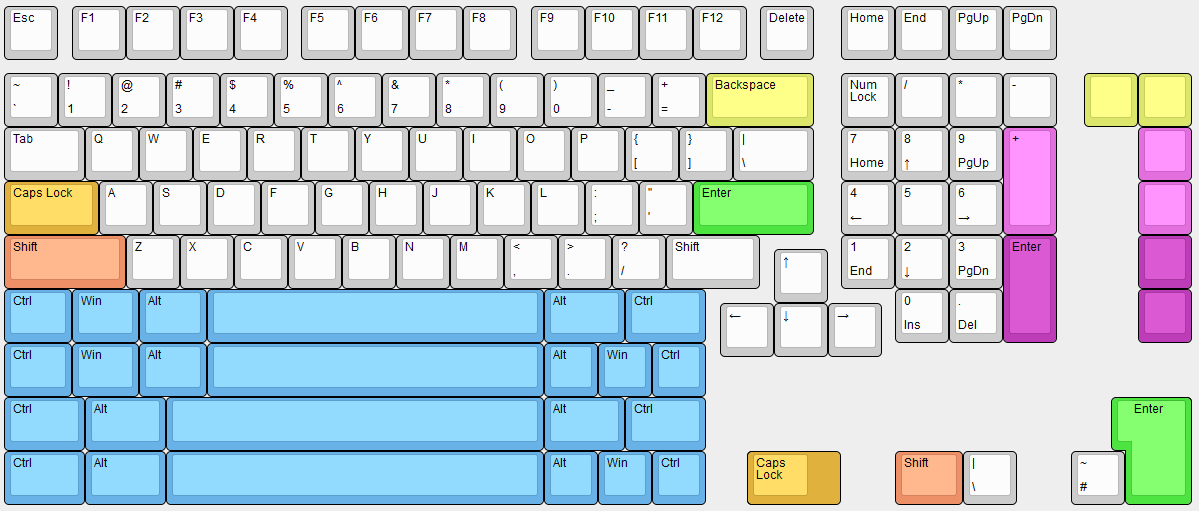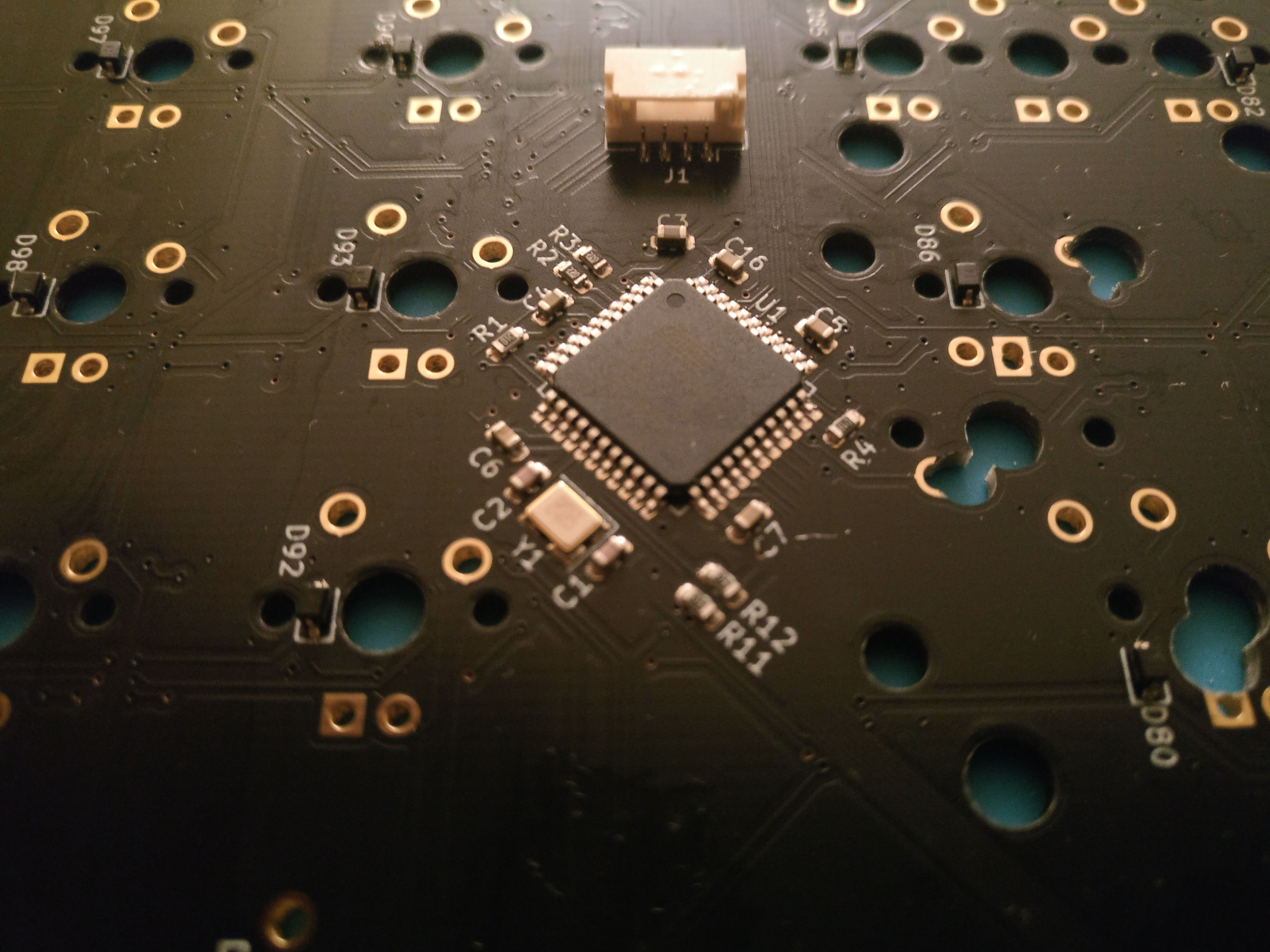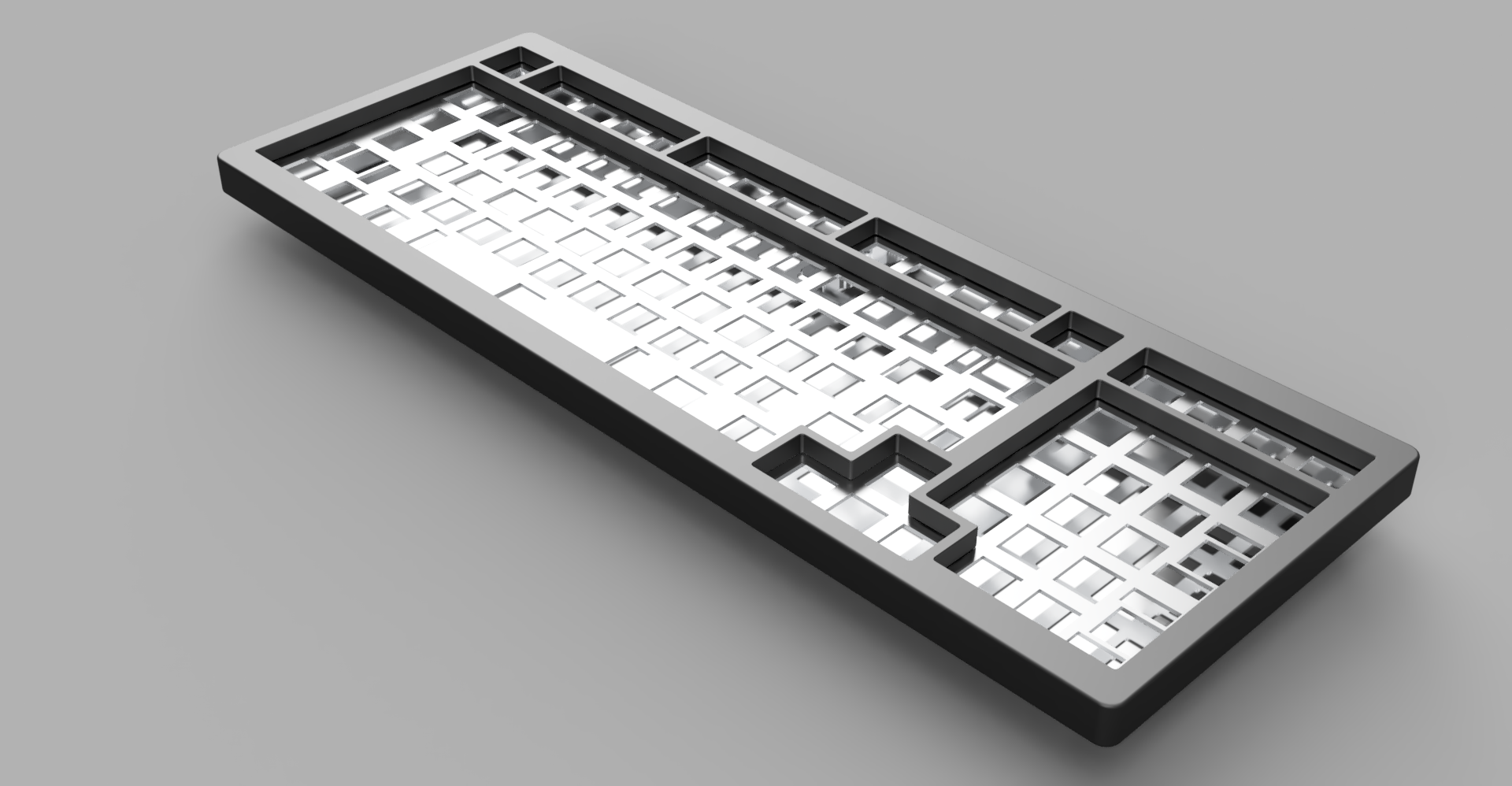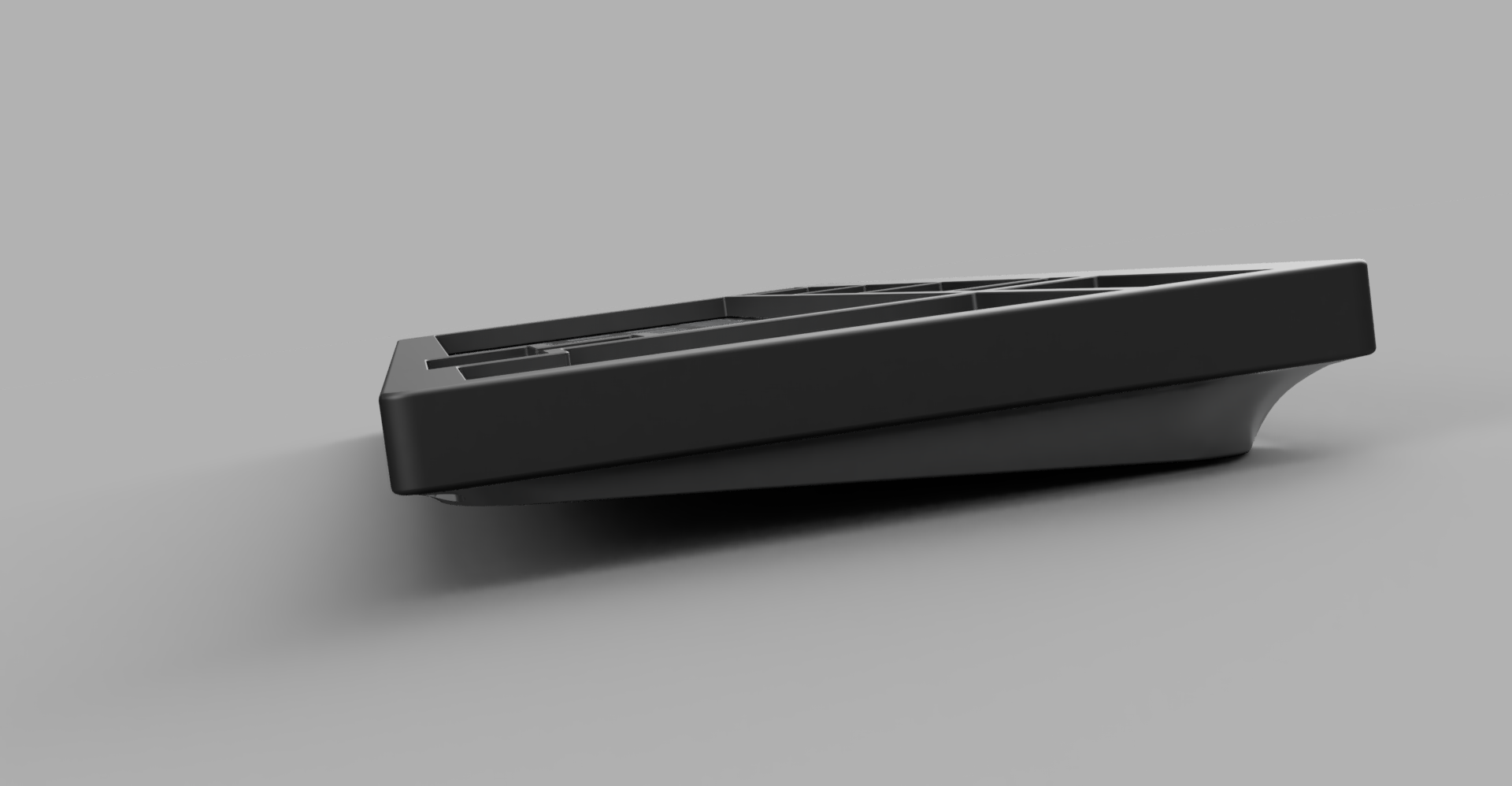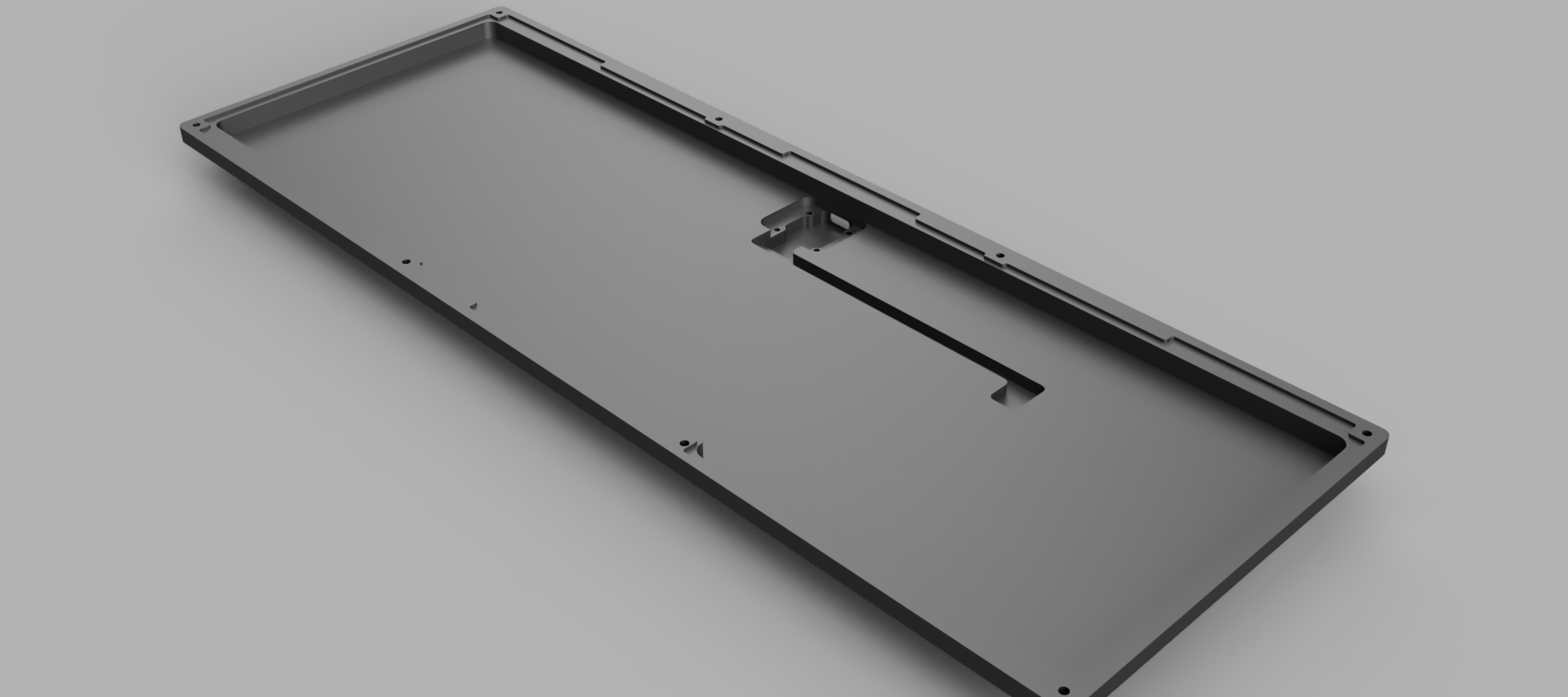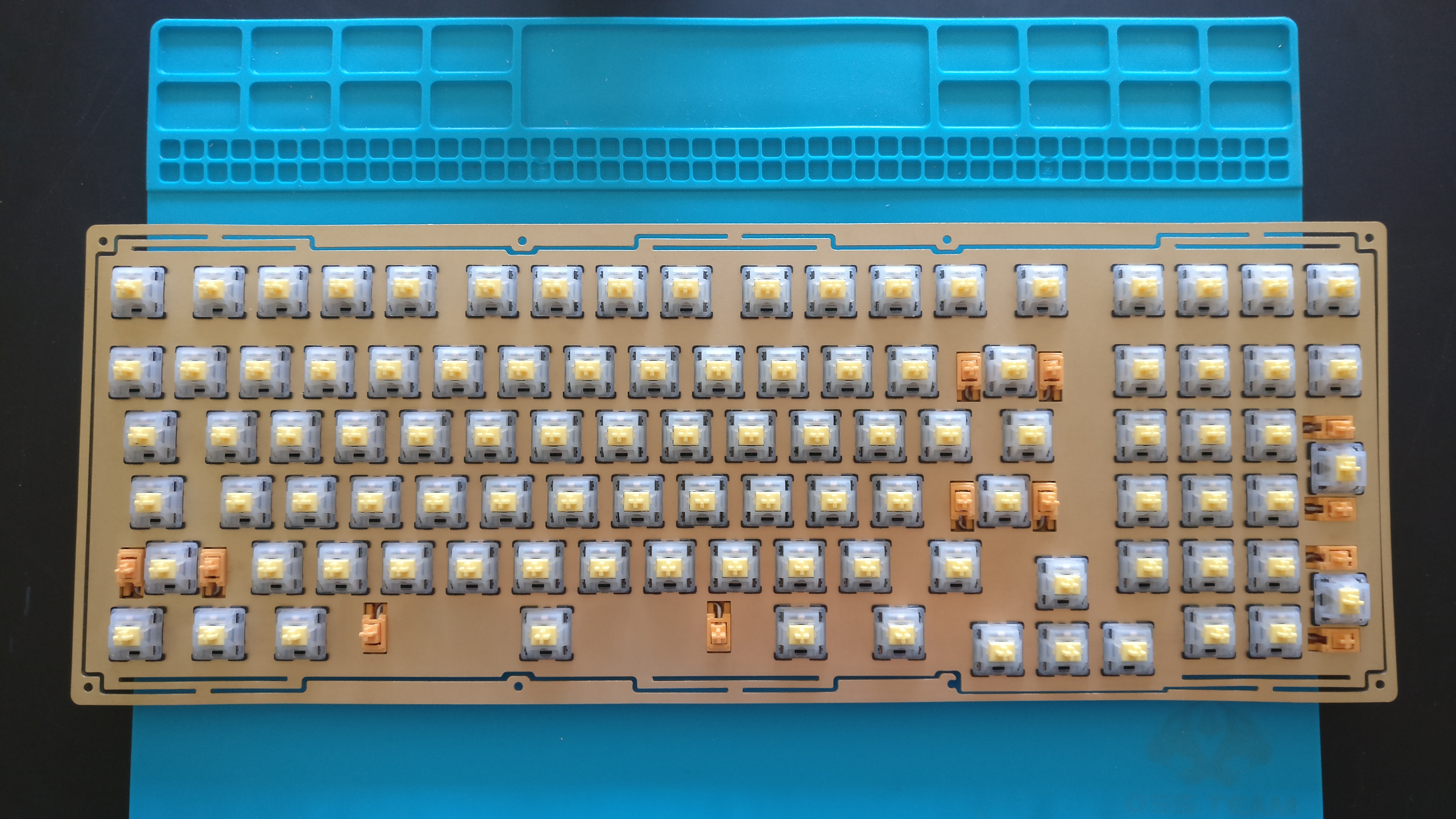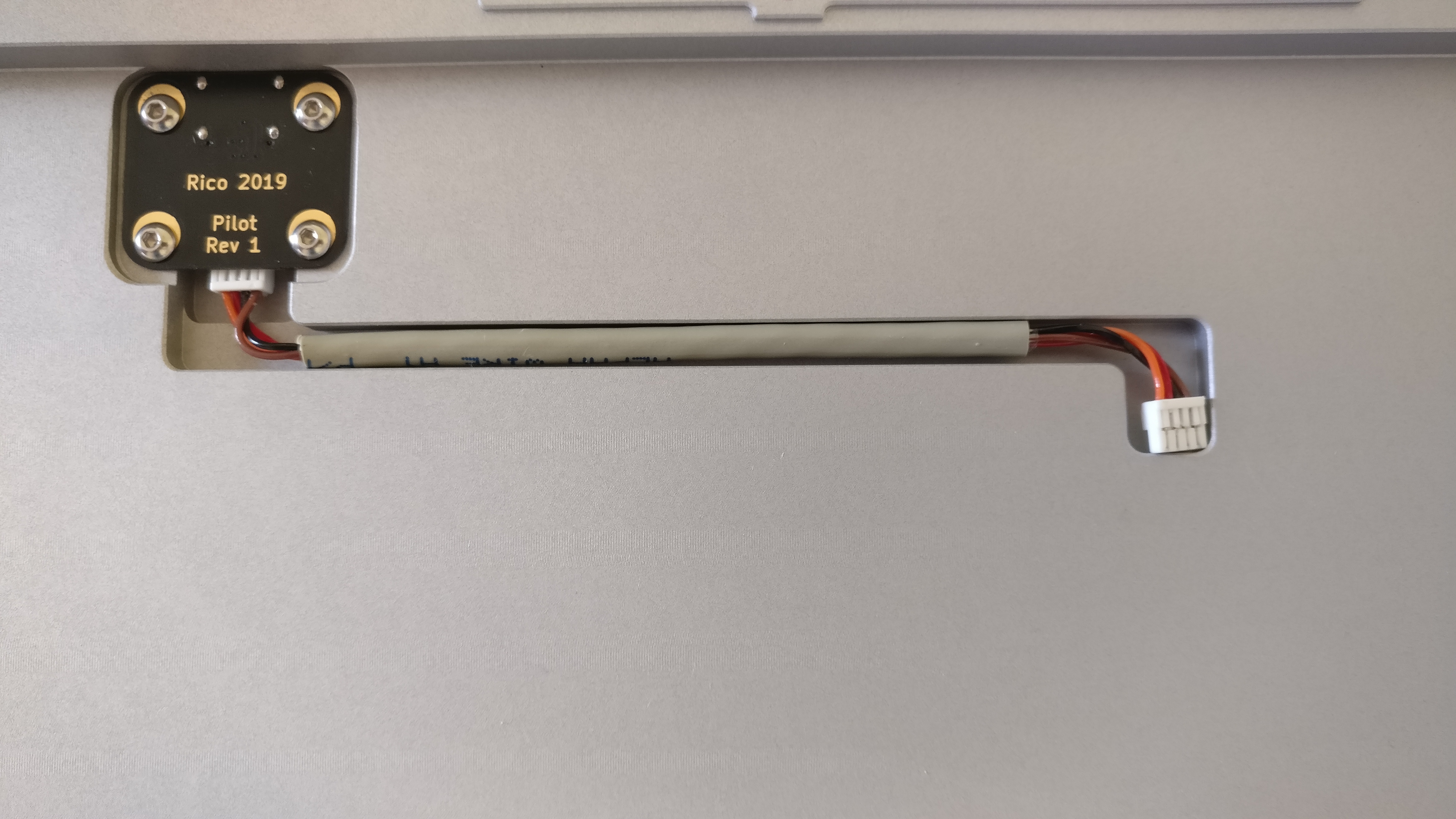The Winghead
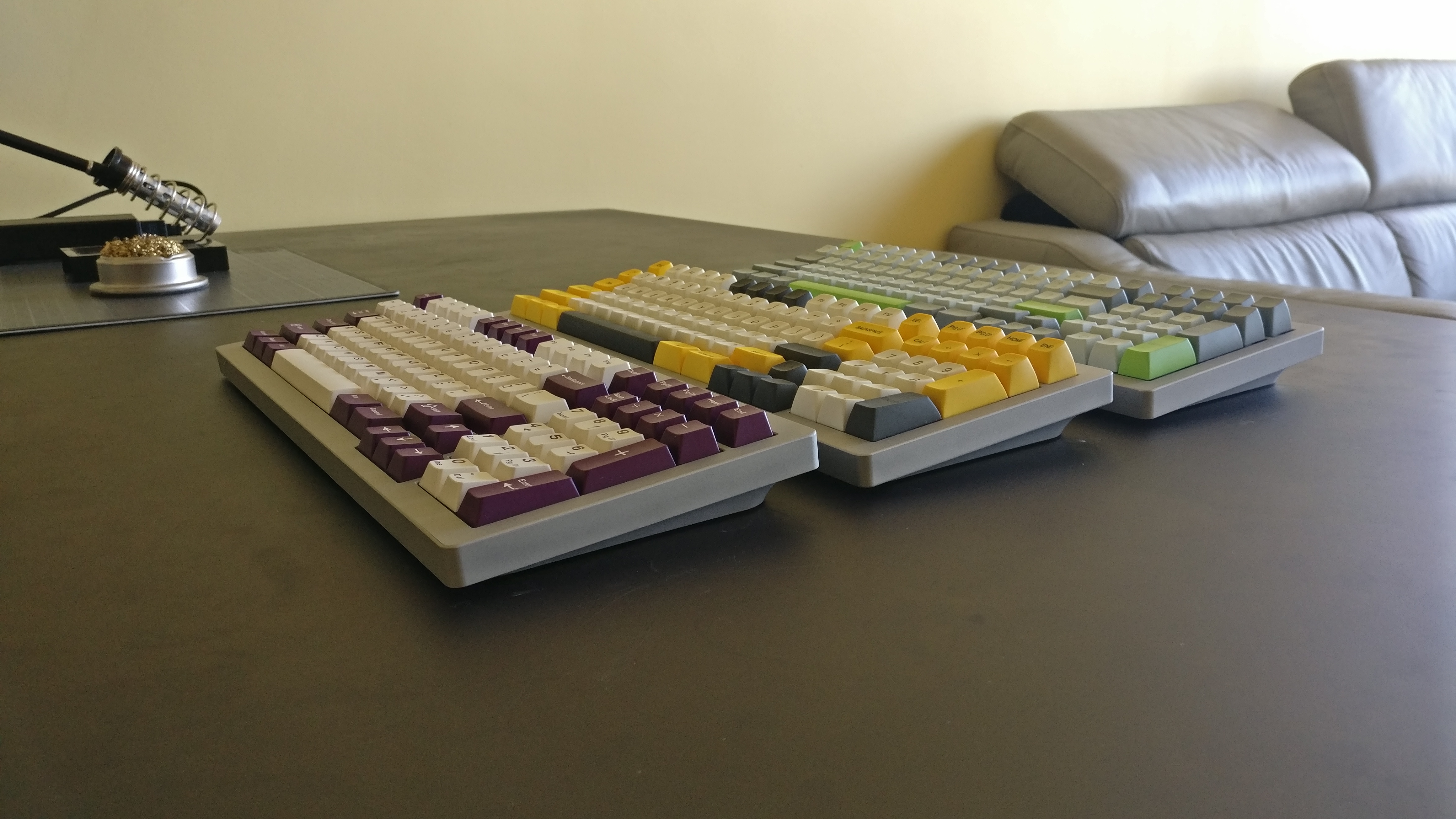
Introduction
This is my second keyboard design and the first of "The Sea Collection" (the winghead is a special specy of hammerhead shark), the project started in October 2019 and ended July 2020.
This is a 1800 layout board with several things added that I wanted to try/play with.
While it has been a field for many experimentations (that concluded to some failures) I wanted it to be a nice keyboard to type on, both sound and feeling wise, which ended to be the case.
Time to completion: 10 months.
Number of units: 3.
Material and finishes:
- Top piece beadblasted and gray anodized 6062 aluminum.
- Bottom piece beadblasted and gray anodized 6062 aluminum
- Plate laser cut 1.5mm thick brass, beadblasted.
Please look at the following Keebtalk link if you want to know more details on the project development.
Design choices
PCB
I wanted to experiment many new things electronics wise and add some challenges (some totally not needed). Here are the feature list :
- Soldered switches with many layouts possibilities.
- Cherry PCB mount stabilizers.
- Custom daughter board design.
- Per switch lighting (monochrome) to experiment with led drivers.
- Use the smallest MCU possible given the features (I used an Atmega32u4).
- VIA compatible.
KiCad has been used for the design.
As a result the PCB trace routing has not be the best looking on earth (far from it)
Case
This time I felt more confident doing a 2 pieces design, assuming the manufacturing cost and dealing with the clearance problems for the fitting. I also wanted to experiment with a more organic shape, at least for the bottom piece. And after seeing Wilba's Thermal I wanted to try doing a leaf spring design.
Case feature list:
- 2 pieces seemless design.
- Leaf spring plate design, allowed plate movement is +/- 1mm.
- Sandwitch mount.
- Comfy 5 degree typing angle.
- Small 3mm clearance between PCB and bottom piece.
- Low front height of 18mm with bumpons.
Fusion360 has been used for the case design, both for the CNC case and the laser cut leafspring plate.
Post mortem
The good
It works, it looks nice, feels and sounds nice while typing. I am typing this text with one of those boards and loving it.
The bad
Mistakes have been done and it is always unavoidable for a first try; I guess this is why you need to make prototypes before doing a GB run.
PCB mistakes:
- Misplaced stepped caps lock key, forcing me to use standard caps lock caps.
- ISSI led drivers problems:
- Does not look to be well supported for monochome lighting by QMK/VIA (but Wilba PCBs do support them with special code path).
- Bad I2C traces routing, too close together resulting in cross talk issues and making the driver non respoonsive at 400KHz (responds at 100KHz).
- So the chip is soldered, but not used in the end...
Case design errors:
- Did unfortunate changes after the test fitting process.
- As a result bottom piece protrudes by 0.2mm from the top piece (but you don't see it by looking at the side or the top).
The ugly
Leaf spring design:
- It works very well to prevent vibrations propagation to the case and make the bottom out less harsh.
- But brass is not the material to select if you want to experience flex.
- Maybe in the future try Aluminium or even FR4 ?
PCB design:
- Using such a small MCU for a 1800 layout forces to use non conventional switch matrix.
- ISSI driver plus led routing adds routing complexity.
- The result is not a nice looking PCB:
- No well defined routing strategy.
- A mess of vias.
- But decoupling caps, crystal and USB lines have been carefully routed so the PCB is rock stable even if looking ugly.
Pictures
